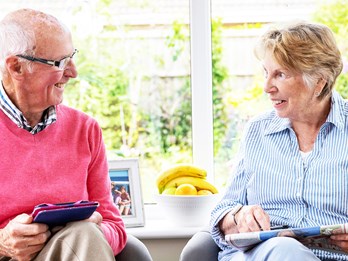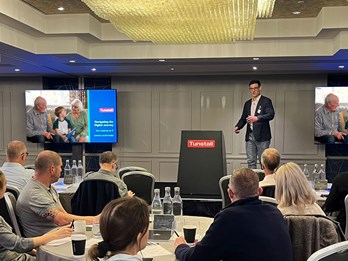Putting the Problem to Bed: Using Connected Care to Prevent Bed Blocking
Nov 29, 2018

Kevin Anderson, UK Marketing Director for Tunstall Healthcare, talks us through the use of connected care in hospitals to transform technology in the NHS and reduce bed blocking.
Bed blocking – whereby patients remain in hospital despite not needing medical attention, taking up valuable bed spaces that could be required for urgent incoming patients – is on the rise. In September, over 144,000 days of care were lost in hospitals because patients could not be discharged to their homes or to another part of the health and social care system; this figure was 5,000 higher than the previous month and the outlook for winter looks similarly bleak, with many NHS Trusts fearing it’ll be more difficult than the last.
A major part of the problem is the ongoing social care crisis. While there has been significant investment in social care with over £240m pledged to offset the impending winter pressures, there remains a huge funding gap that means many Local Authorities are unable to provide adequate levels of support in their communities. This means that many patients, particularly older individuals, cannot be safely discharged from hospital even once their medical conditions have been managed, because of fears that they will be unsafe at home.
Keeping older patients in hospital beds for days on end not only puts those hospitals under huge additional strain, it also costs a great deal of money. Prolonged hospitals stays have been associated with an increased risk of hospital acquired infections and decreased mobility. What’s more it is also distressing and frustrating for the patients who would ultimately prefer to be at home. The answer has to be to improve support in those homes, so that medical staff can confidently discharge patients to recuperate independently and safely.
Tunstall believes that connected healthcare is the missing piece of this puzzle. A trend shared by the current health secretary Matt Hancock, who recently pledged an additional £487m to transform technology in the NHS to ultimately improve patient care.
There are various services that Tunstall offers to help alleviate the winter pressure. Connected care technology refers to alarms and sensors placed throughout the home to unobtrusively monitor residents’ movements following their discharge from hospital. These technologies – for example bed sensors, fire or flood alarms and door entry sensors – will immediately alert a response team in the event an individual appears to have fallen or significantly altered their normal behaviour patterns. This provides an additional layer of safeguarding and support, whilst still enabling individuals to lead independent lives at home.
Connected health technology enables the remote capture of patients’ vital signs and symptoms through, for example, identifying spikes in temperature or a decrease in oxygen saturation, that may indicate deterioration in health. This allows medical practitioners to monitor patients’ recovery remotely, and parameters can be set for automatic escalations if symptoms worsen.
Collectively, connected care and connected health technologies can make hospital visits for older patients less likely in the first place, because chronic conditions are better managed, and incidents in the home are responded to more efficiently. When hospital visits are necessary, those patients are more likely to be discharged quickly, drastically reducing the bed blocking phenomenon. It also goes some way to prevent unnecessary readmissions, ensuring those who return home clinically fit don’t ending up being readmitted very soon afterwards because of lack of support at home.
Of course, there is still a cost implication to deploying connected care and health technologies – but supporting older individuals to live in their own homes, or in sheltered or assisted living arrangements, is still far more cost-effective than full-time care homes. More importantly, the majority of individuals wish to remain living at home for as long as possible.
A joined-up, integrated approach to health and social care is crucial if both sectors are to face the challenges of a growing and ageing population and restricted government funding; connected health and care technologies are central to this.
We at Tunstall believe that technology-enabled care (TEC) is the answer to the age-old problems plaguing the NHS. Contact us if you would like more information on how our solutions can help safeguard and future-proof healthcare services.



